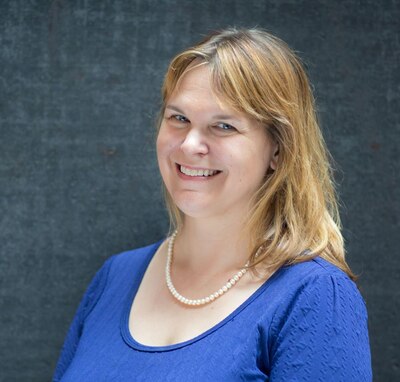I came into the classroom compelled to teach about the Holocaust, after high school and college instructors piqued my interest in the subject. During my teacher training, I had crafted a complete Holocaust unit that I was eager to implement in my classroom. The opportunity came two years into teaching when I created an "Introduction to Holocaust History" elective for our high school students.
At that point in my career, I had the privilege of learning from an excellent Holocaust historian and had just enrolled in a Holocaust and Genocide Studies master's program at a nearby university. I felt confident and well-equipped to work with my students, and I was eager to implement the cornerstone activity in my unit: a simulation that crowded students into a corner of my classroom while reading a short piece that had them imagining they were in a boxcar.

I look back now on that simulation, which I subjected my students to for the first two years I taught the course, with a mix of shame and understanding. It was not until I met my future mentor, Elaine Culbertson, that I realized just how misguided this practice was. At a national conference on the Holocaust, Elaine pointed out that simulations were never appropriate in the context of Holocaust education. She noted that, thankfully, our students were having these experiences inside of climate-controlled classrooms, with school lunches in their bellies and a measure of stability in most of their lives. She explained that our students couldn't understand the boxcar scenario, nor should we traumatize them into thinking they could.
With that explanation, my outlook on teaching the Holocaust changed significantly. Elaine's words became a mantra: My job, she told me, was "to lead my students safely in and safely out of this topic."
With that solemn responsibility in mind, I offer the following suggestions so that other educators may avoid or correct some of the same mistakes I made.
With that explanation, my outlook on teaching the Holocaust changed significantly.
- Avoid having students rationalize or justify the thinking of perpetrators. This can mislead students into thinking that there could have been rational reasons to persecute and kill. Instead, ask them to explore the roots of Nazi racial ideology and how it was spread to the populations of Germany and occupied Europe. Echoes & Reflections, which provides free, online Holocaust curriculums and where I am now a curriculum and instruction specialist, contains structured lessons to help students examine primary sources, such as speeches and propaganda illustrations.
- When planning lessons and choosing resources, keep your students' social and emotional well-being top of mind. You don't need to share images of dead bodies; students are just as impacted by a picture of empty, piled-up clothing. The latter does not give them nightmares. Rather, it compels questions and thoughts about the human beings who wore those clothes, shoes, and wedding rings. Or, consider having students examine photographs from the Auschwitz Album instead of showing them post-death photos. The album contains a series of perpetrator-captured images of the victims going through the process of arrival, selection, and waiting at Auschwitz. The victims did not give their permission to be photographed in either scenario, but in the former, they are clothed and shown as human beings versus as a mass of anonymous corpses.
- Be sure to consider the age and grade level of your students. While students may project maturity, research by educators such as Simone Schweber, author of "Making Sense of the Holocaust: Lessons from Classroom Practice," shows that introducing the more difficult aspects of the Holocaust at too young an age can repel students from further study of the topic. When working with students in younger age groups, such as the middle schoolers, consider focusing more on the prewar life of Jews in Europe or on topics such as how Jews lived in the ghettos versus focusing on the horror of the Final Solution. Echoes & Reflections recently introduced new resources on prewar Jewish life in Unit 1: Studying the Holocaust. Meanwhile, Unit 4: The Ghettos has some powerful poetry and imagery that are also more appropriate for younger learners.
- Select activities designed to build empathy through the use of resources such as testimony, instead of suggesting that students "simulate" events from this horrific era. Don't ask students what they would do; ask them how testimonies like that of the late Holocaust survivor Roman Kent relate what was done to resist oppression and the difficult choices these decisions presented. Additionally, memoirs and visual history testimony captivate students in a way fictional films and books often cannot.
Remember that you are not alone in struggling to teach this tragic chapter of history. If you have taken a misstep, as I did early in my career, it's never too late to do better now that you know better.
Jennifer Goss is the curriculum and instruction specialist for Echoes & Reflections. She taught social studies for 19 years and holds master's degrees in Holocaust & Genocide Studies and American History.
A version of this piece first appeared on the Echoes and Reflections site.



